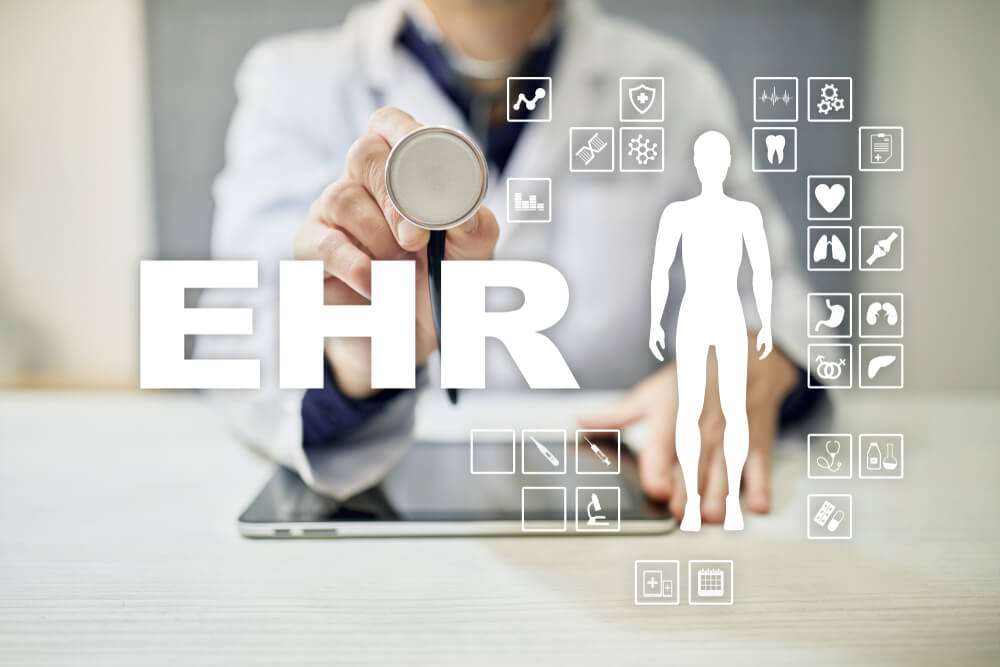Electronic Health Record (EHR) is a magical health IT tool widely celebrated for promoting interoperability across the healthcare industry.
Electronic Health Record (EHR) is a magical health IT tool widely celebrated for promoting interoperability across the healthcare industry. Here are some of the most frequently asked questions regarding EHRs answered:
Read More : Complete Guide: What is an Electronic Health Record (EHR)?
What is EHR?
EHR is essentially the digital version of a patient’s charts that can manage their medical history. EHR system facilitates several vital functions such as secure and instant access to patient information, electronic prescription, online medication refills, and a lot more.
How can using an EHR benefit my medical practice?
EHR typically works on four different aspects to improve your practice’s productivity:
- It streamlines the work processes and helps avoid workflow disruptions caused by manual patient charts.
- It helps eliminate time wastes, such as time spent on digging through paper-based records.
- It ensured more robust security around patient information.
- It improves mobility with EHR-enabled mobile devices.
Does EHR impact patient care?
Yes, it certainly does. Using EHR, providers spend less time manually charting patients, running through patients’ histories, and writing prescriptions. Instead, they divert this time for more patient-focused activities such as seeing and treating more patients. Additionally, EHR offers an easy reference to previous notes while increasing interoperability to improve patient care ultimately. Moreover, EHR software typically boosts patient-provider communication to impact patient outcomes considerably.
What does it mean by ‘A Certified EHR System’?
A certified EHR system essentially meets the following criteria:
- It has a structured format to store data.
- It includes benchmarks to measure the quality of care.
- It offers the complete functionality of security.
- It meets the certification standards of CMS and ONC.
What are the added features that I can enjoy with an EHR?
An integrated EHR system will typically offer you numerous built-in features and several customizable features as well. These include, but are not limited to:
- Electronic prescribing
- Patient portals
- Integrated telemedicine solution
- Integrated billing solution
- Automated report generation
What is electronic prescribing?
Electronic prescribing, or more commonly referred to as e-prescribing, allows the providers to prescribe medication online without having to hand-write it. They can enter the prescription information into the EHR, using their tablet, smartphone, laptop, or desktop computer, and securely transmit it to pharmacies through a connected network. When the pharmacy receives the request, it can begin filling the medication immediately.
What are the benefits of e-Prescribing?
e-prescriptions serve numerous benefits:
- Saving the time and hassle of hand-written prescriptions
- Overcoming the concerns of legibility of hand-written prescriptions
- Reducing medication errors
- Checking for drug interactions
- Improving medication adherence and quality of care
What is a patient portal?
A patient portal is a secure online interactive platform that allows the patients to interact with their providers 24/7 and in real-time. Patients can enjoy 24-hour access to personal health information, and they can directly communicate with their providers for their health-related concerns. Providers can respond to these queries promptly – anywhere, anytime, even beyond regular office hours. Providers can also post informative content on patient portals to generate education and awareness for various medical issues, such as the novel coronavirus.
What is telehealth, and how is it different from telemedicine?
While we often see ‘telehealth’ and ‘telemedicine’ being used interchangeably, there is a slight nuance between them. Telehealth is a broader term that encompasses the delivery of health-related services and information by deploying telecommunication technology. Telemedicine is a more focused concept, referring to the specific use of medical information shared between two stakeholders via electronic communication with the underlying objective of improving patient care. Hence, telemedicine includes consultative, diagnostic, and treatment services.
You can integrate your EHR with your telemedicine solution to leverage virtual visits at your practice.

Join the Discussion!